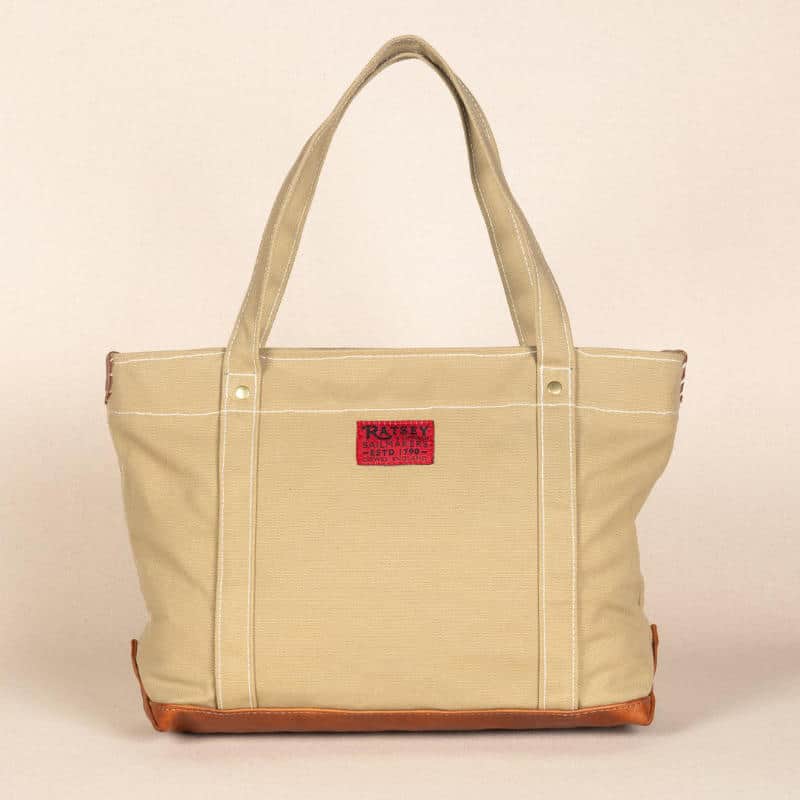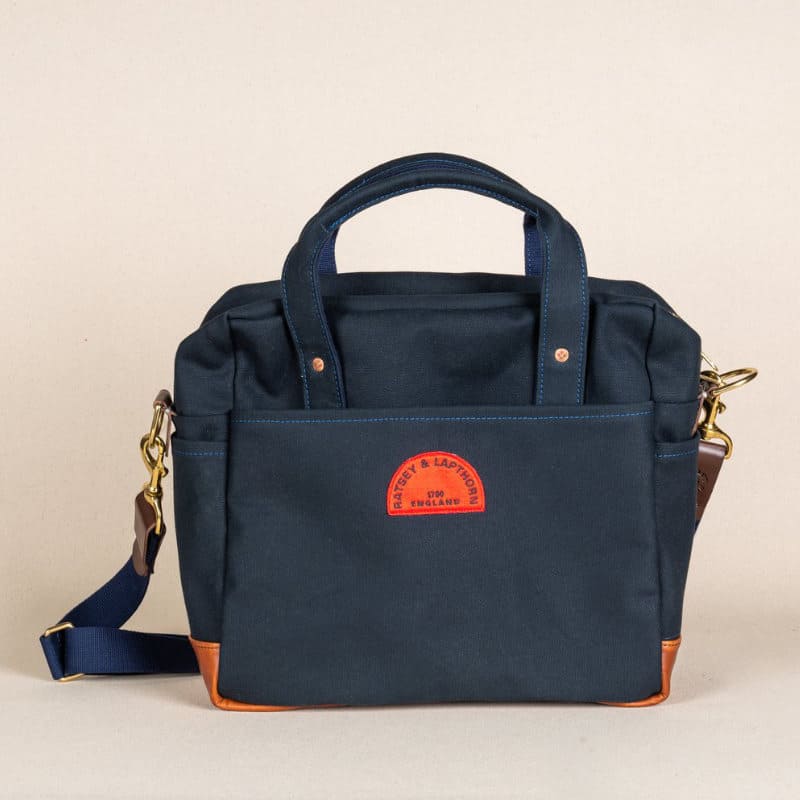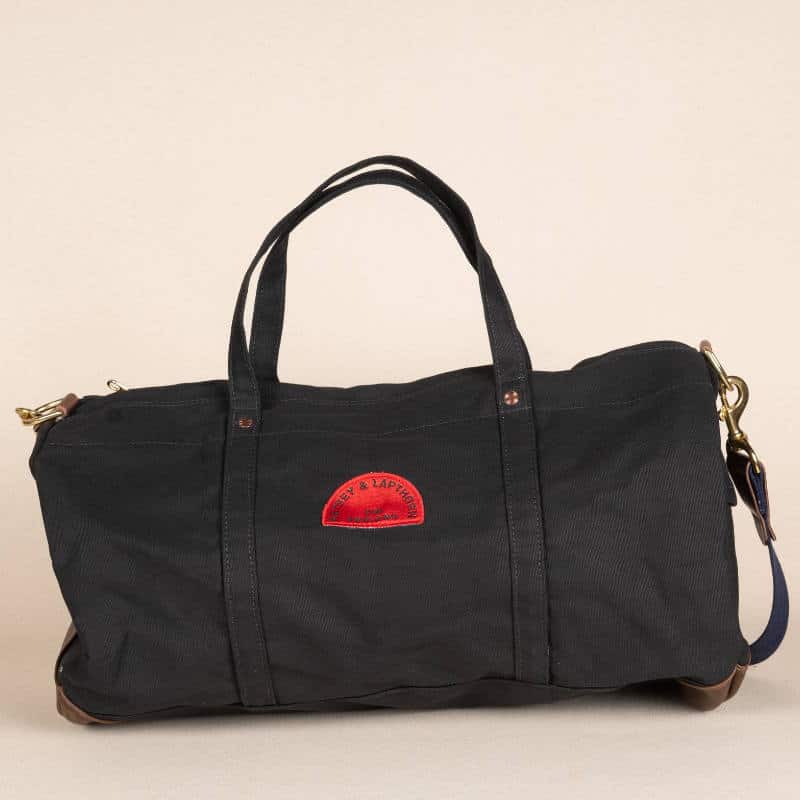Rastey & Lapthorn INTERVIEW
Handcrafted Bags from the World's Oldest Sailmakers

'Meet the Maker' series of interviews are very close to our heart and this edition we chat with Jim Hartley from Ratsey & Lapthorn. So, sit back and enjoy reading about how Ratsey & Lapthorn began and how they create their heritage bags on the Isle of Wight.
SGB: First of all, can you give our readers a quick introduction to who Ratsey and Lapthorn are?
Jim: Ratsey and Lapthorn are the oldest sailmakers in the world, founded in Cowes in 1790 and making sails there ever since. Over this time we have 'suited' some of the worlds most illustrious yachts, for Kings, Industrialists, Racers and America's Cup winners. We specialise in classic sails and are one of the very few lofts left in the world that can make a traditional sail. Our sailmakers are craftsmen of the finest order, with the skills being passed down from Master to Apprentice from generation to generation.
SGB: Have Ratsey and Lapthorn always made bags as well as sails?
Jim: Yes, we think we have a valid claim to being the oldest bag maker in the world. Before the invention of heating and refrigeration, Ratsey made tough Tote style bags to carry coal and ice to yachts. These were made in the downtime between sailmaking from off cuts of the 18oz cotton canvas that was used to make sails in those days. We used to have a large loft in New York and to this day in parts of New England, a Tote bag is often heard being referred to as a 'Ratsey'.
SGB: Describe the Ratsey and Lapthorn in 3 words?
Jim: Heritage, Craft, Elegance
SGB: All of your bags are made in your sail Loft, can you tell us a bit about the loft?
Jim: We have had a loft in Cowes since 1790 and it is a very special place, full of tools, sails, yacht plans, photographs and other ephemera, perhaps more akin to a museum. The whole space is raised up by 3 feet, and then 'pits' are sunken into the floor with extremely heavy duty sewing machines so in effect the entire space becomes one gigantic table where sails up to 2-300 square meters can be laid out flat and worked on.
SGB: What inspires the designs for Ratsey bags?
Jim: All our bag are either styles that such as the Tote that Ratsey has been making for centuries or are inspired by the business of sailmaking. For example, our 'Measurers Bag' is based on a style that sailmakers took to boats to carry all their tools, measuring tapes,, notebooks etc. It was designed with both shoulder and back strap so it can be slung on the back or side when climbing the rig. These attributes happens to make this bag very relevant as a contemporary work soft briefcase that may need to occasionally go on ones back if cycling etc. We are fortunate that sailmaking and sailing in general is a very practical pursuit, items need to be well thought out and extremely hard wearing.
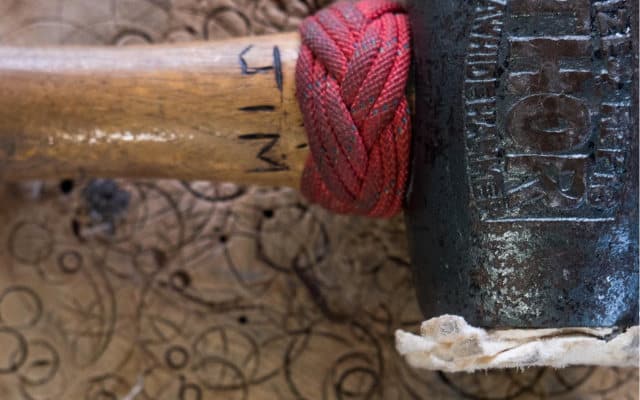
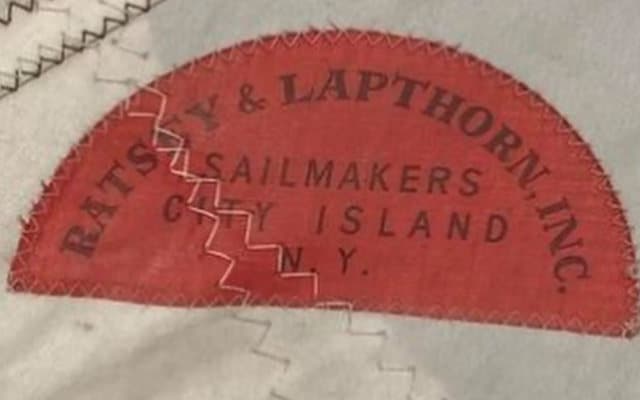
SGB: What does the process of making a Ratsey bag look like from beginning to end?
Jim: We program a production run in the loft, which tends to be in downtime between the sailmaking jobs. We tend to make in quantities of 5 of a style as this is a manageable level though we do make to order if a particular colour is out of stock. The canvas comes in on a roll and is marked and cut by hand from our patterns. The sailmaker then assembles the item and seams on the machines before passing to the finishing department where the hand work completes the bag. We put the finished item into a ditty bag dust cover made from up cycled old spinnaker cloth before packing and posting. This is like a surprise gift to the customer and are really useful as laundry or swimming bags.
SGB: What kind of machinery is used for your products manufacture or are your bags mainly made by hand?
Jim: The panels are all cut by hand then industrial sailmaking sewing machines seam the main panels together. These machines are not the type one finds in a regular bag factory and consequently the threads they can use are extremely tough, the same strength to seam a bag as used to seam a 200m2 sail designed to withstand the full force of the elements. Just like a classic sail, the bag then moves to the finishing benches where the application of the zip tabs and shoulder straps are done by hand with a waxed polyester thread.
SGB: Is there a favourite tool in the craftsman's armoury?
Jim: It has to be the sailmakers palm. This is essentially a leather fingerless glove that is used to protect the palm off the hand when driving a needle through several layers of heavy cloth or leather. Watching Matt work with this is a pleasure, this is when the craft really comes to the fore.
SGB: Is there a particular part of the process that you love the most and why?
Jim: In terms of the process, it would be the hand finishing as mentioned above. But I would add that seeing the finished product with the iconic Ratsey red 'D' badge is rather special. To know that the craft we feel so passionately about is being utilised to make items for end users that may not be sailors feels quite cool.
SGB: The use of quality materials is something that we value at SGB, can you tell us a bit about the materials used in your products and perhaps where they are sourced from?
Jim: The primary fabric is 18oz cotton canvas which we source from Halley Stephensons in Dundee. The cotton is sustainably sourced and BCI accredited. Before the invention of synthetic fabrics, sailcloth was made from Egyptian cotton canvas and Dundee was traditionally where all the best mills were located. Having this link to this historical cloth and source is extremely important to us. Leather is also used in sailmaking, primarily to protect the corners and other areas exposed to the greatest wear and tear. We use a well oiled veg tan leather sourced from AA Crack in the UK. In sailmaking the oil is needed to repel the elements, which is the same on the bags but also looks and smells great. We have designed the bags such that a customer can exchange the main body panel with their own sailcloth if they have an old sail that has gone beyond its natural life, not only is this good from a sustainability perspective, but it also makes the bag extremely special to the owner.
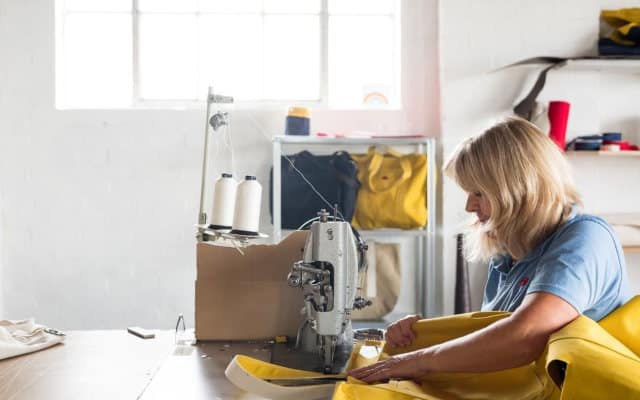
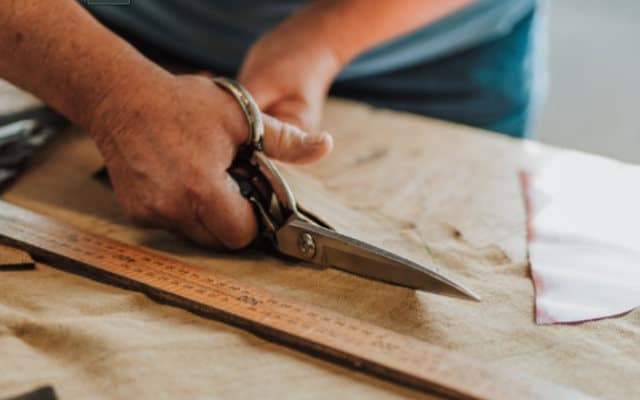
SGB: Following on from this, quality seems to be equally important to you - can you tell us why?
Jim: Why? Hmmmmmm. I have never really considered why, but have never considered it to be anything other than the best possible quality. I guess it comes from our sailmaking heritage where quality and attention to detail is so important. Sails have to fit perfectly, they have to withstand the elements and your life can literally be in their hands. So quality is absolutely paramount and Ratsey and Lapthorn, more than most, has a reputation for building sails that last. Recently, a chap came into the loft and wanted a new mainsail for a yacht that was build in 1967 and had the original Ratsey sails from launch more than half a century ago! On quality, we stick to the motto that the famous Tom Ratsey ran the loft by in 1833, 'There is only one standard of work in tis loft and that is the very best'.
SGB: Taking all of the above, what makes a Ratsey & Lapthorn bag special?
Jim: Authenticity. So many brands have clever marketing stories but often it is just that. Our bags are genuinely made in our loft in Cowes, by sailmakers from super strong materials and we are prepared to stand by their quality by offering a lifetime guarantee.
SGB: What excites you most about working at Ratsey & Lapthorn?
Jim: My wife would say I have a passion for old things! (thankfully so does she!, haha). I drive a 1972 car, a boat from 1984 and cherish my 1960's Omega Seamaster. The Heritage in Ratsey and Lapthorn is extraordinary, it is a hugely important part of our countries nautical history. My greatest satisfaction is making this come alive and be relevant today. So combining modern sail design software with traditional sailmaking techniques. Elevating our bags to make them purposeful today and ensuring the business is relevant and on a sure footing for the next 250 years.
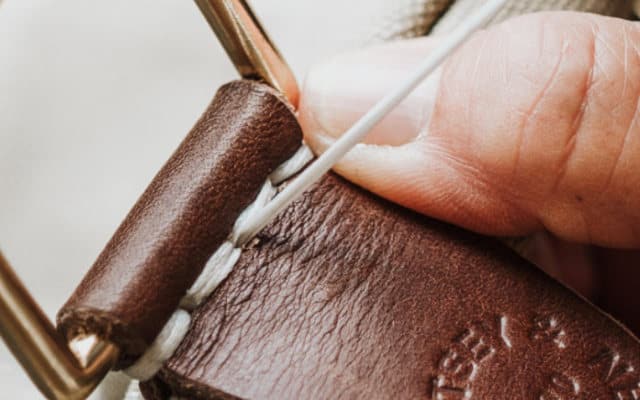
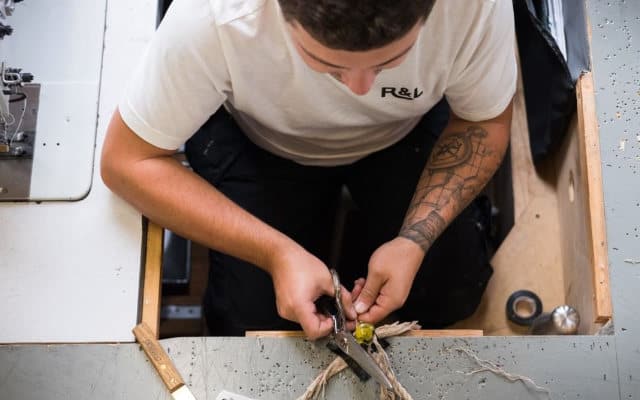
SGB: Let’s talk sustainability, what approach to sustainability do you take?
Jim: Good question. Im afraid I am rather sceptical of many of the sustainability gimmicks and green washing that get's wheeled out all too often. Of course it is important that every business considers their processes and sources sustainably wherever possible, but it often feels like it is the primarily the work of their marketing team
Our approach is straightforward, of course we source sustainably, but above all, we make bags that are bullet proof and give them lifetime guarantees. Sustainability can seem somewhat of a dark art but actually it is quite simple. Ultimately it is incumbent on all of us to buy and dispose of less stuff! So buy well and buy once, then repair and cherish the wrinkles and the scars that you and your bag acquires through life.
SGB: Is there anything exciting in the pipeline for Ratsey & Lapthorn?
Jim: There is plenty to be excited about in the near future. On the sailmaking side we have a new loft opening in Barcelona shortly which is also the venue for the next Americas Cup with which Ratsey has a long and illustrious connection. On the bags side, we have a further 4 styles which we are launching in the Autumn and all of which will soon be showcased on our new website currently in development and of course through yourselves at Sir Gordon Bennett.

